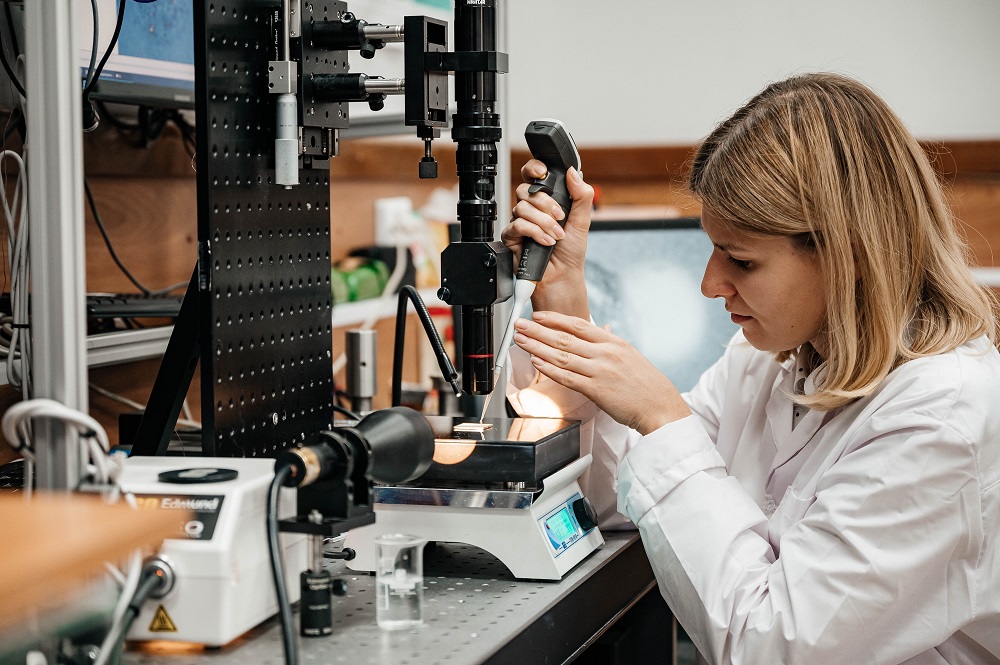The project is being delivered by scientists from the School of Energy and Power Engineering and the Research School of High Energy Physics of the university. They have developed a method based on laser texturing and laser chemical modification to create a biphilic material. With a micrometer-scale nanosecond laser, they form a specific texture on the near-surface layer of a material, then clean the product in an ultrasonic bath and make the surface superhydrophobic. The finished material is textured with a laser to add superhydrophilic properties.There are plenty of methods and approaches to create superhydrophobic, superhydrophilic and biphilic structural materials. However, most of them are expensive and not scalable to the parts, process surfaces of real operating facilities. Besides, their properties are not long-lasting. We have created our unique method based on laser processing as a solution to this problem,
The researchers used aluminum-magnesium alloys to manufacture biphilic materials. The products were tested by simulating the operation of one of the most effective cooling systems for energy-intensive equipment in the power industry, namely the spray cooling system. In the experiments, the scientists studied the process of liquid boiling and evaporation on the created surfaces: they recorded how the liquid spreads, in what direction, what area it spans, at what rate it evaporates, the velocity of convective flows in the liquid, their direction, and other characteristics. The results of the study proved that laser modification of the surface improves the efficiency of coolant evaporation from the surface many fold.We have developed a method to predict the texture configuration formed by laser irradiation on the processed surface, e.g., micro-columns or micro-channels. Then, we attribute the desired wetting properties (superhydrophilic or superhydrophobic) to certain areas of the surface,
The biphilic materials project has stemmed from the scientists' research on superhydrophilic and superhydrophobic surfaces. The research findings have been published in the Surface and Coatings Technology (Q1, IF: 5.4).


